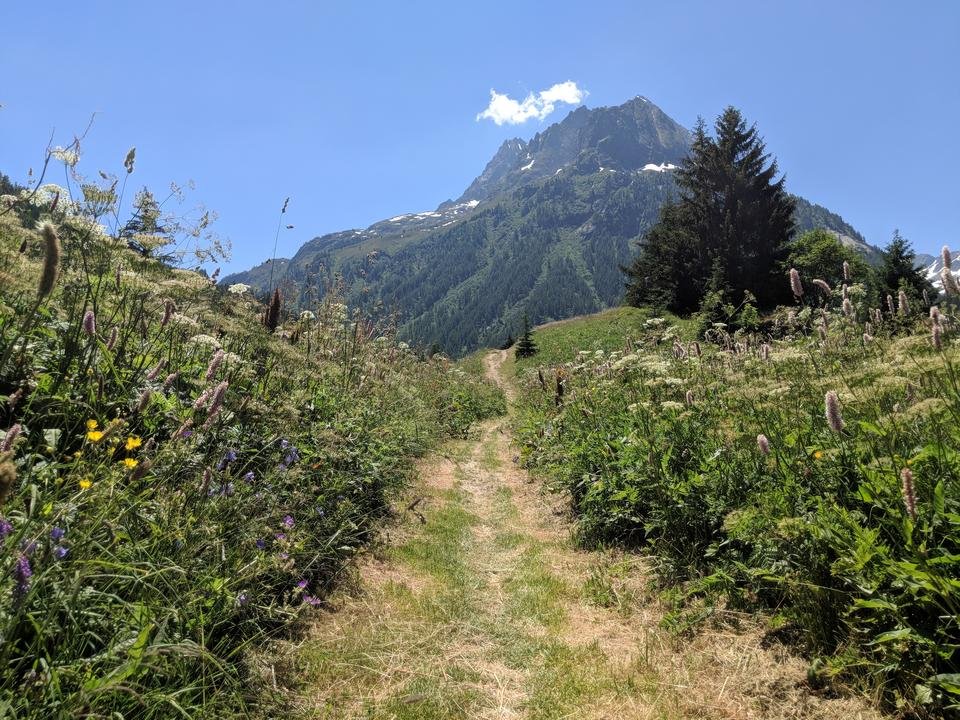2021-07-01
On January 24, 2010, Zeke Farwell completed the Long Trail.
He had begun just two days earlier, connecting more than 50 segments of trail spanning over 200 miles.
Motivated by “the longest and most well known hiking trail in Vermont”,
Zeke often revisited portions of the trails in the years to come.
Now I’m not revealing a secret FKT,
but rather the completion of the Long Trail route on OpenStreetMap.
OpenStreetMap is like Wikipedia …
read more
2020-06-15
The John Maddox Prize has been awarded annually since 2012 to “researchers who have shown great courage and integrity in standing up for science and scientific reasoning against fierce opposition and hostility”. The prize is a joint initiative between the journal Nature and the Sense about Science charity.
Fergus Kane nominated Alexandra Elbakyan, creator of Sci-Hub, for the prize in 2018. While selected to a final shortlist, she did not win. Dr. Kane has nominated …
read more
2019-07-29
Iceland’s longest continuous marked trail, some say. Where the night is not, the wind wails, the rain rages, and geysers gurgle.
Starting June 15, 2019, I hiked from Skógar to Leirubakki in Iceland. My five day trek covered the following connected trails:
- Fimmvörðuháls Trail (Skógar and Þórsmörk, 24 km)
- Laugavegur Trail (Þórsmörk to Landmannalaugar, 63 km)
- Hellismannaleið Trail (Landmannalaugar to Rjúpnavellir, 55 km)
- Hellismannaleið Trail Extension (Rjúpnavellir to Leirubakki, 25 km)
Overview
The hike …
read more
2019-03-02
Below is the saga of how it took six months and 75 messages for Uber Support to admit a billing error. The issue was quite simple. The receipt indicated that I paid via Uber Credits, however my credit card was charged for the fare. After countless hours of back-and-forth, Uber finally claimed that the receipt is incorrect. However, Uber has still not updated the receipt nor refunded me.
On June 23, 2018, I took an …
read more
2019-01-25
This post discloses an 8-day itinerary for exploring the Big Island, Hawaii. It is based on the expedition performed by Trang and I in January 2019. Of our 7 nights off the resort, we tent camped for six, which kept the combined lodging costs under $250.
Warning: these adventures are not for the weak. Instead, these feats should only be attempted by a strong and frugal traveler, who is prepared to leave no trace. We …
read more
2018-07-14
On Wednesday, June 27, 2018 I woke up in Zurich, having given a presentation at the Central Library the day prior. After 3 trains, I arrived in the French town of Vallorcine to begin my hike of the Aiguilles Rouges, which in English translates to “Red Peaks”. The beginning of the hike was picturesque with benign terrain (this would change soon enough):

The first day was full of day hikers and alpine ibex (bouquetin in …
read more
2018-03-12
Should citations in scholarly writing appear as author-year snippets, like (Pantcheva, 2018; Zelle, 2015), or numbers, like [1,2]?
Let’s refer to these two methods as author-style and numeric-style.
You may have also heard them referred to as the Harvard and Vancouver referencing systems.
Author-style
Here’s an example of author-style from our recent Sci-Hub Coverage Study published in eLife.
First, see how citations appear in the main text:

Notice how studies with 3 …
read more
2017-12-20
In 2015, Simeonov and I proposed that oxygen is an inhaled carcinogen, resulting in greater lung cancer incidence at lower elevations.
Our study proved controversial, even evoking criticism from Cancer Research UK, which we responded to elsewhere on this blog.
While the link between elevation and lung cancer is an open question, the association between asbestos and mesothelioma is indisputable, having been cemented by a century of epidemiologic interrogation.
Here, I chat with Alison Grimes …
read more
2017-03-13
Today is an exciting day for reproducibility in computational sciences. Continuous analysis awakens with its publication in Nature Biotechnology. Continuous analysis is a method for automatically re-executing a study whenever its source code is updated. Any changes resulting from the update are tracked and visible.
Once properly configured, continuous analysis makes a computational study fully reproducible at every state throughout its history. It works by combining two technologies. First, continuous integration monitors the source data …
read more
2017-03-08
On February 26, 2016, the first version of an article titled “How blockchain-timestamped protocols could improve the trustworthiness of medical science” was posted to F1000Research. The paper had two authors: Greg Irving of the University of Cambridge and John Holden of Garswood Surgery. The article describes a method for timestamping clinical trials, so the retrospective existence of a trial can be verified at a later date. The technique uses the Bitcoin blockchain as an immutable …
read more


